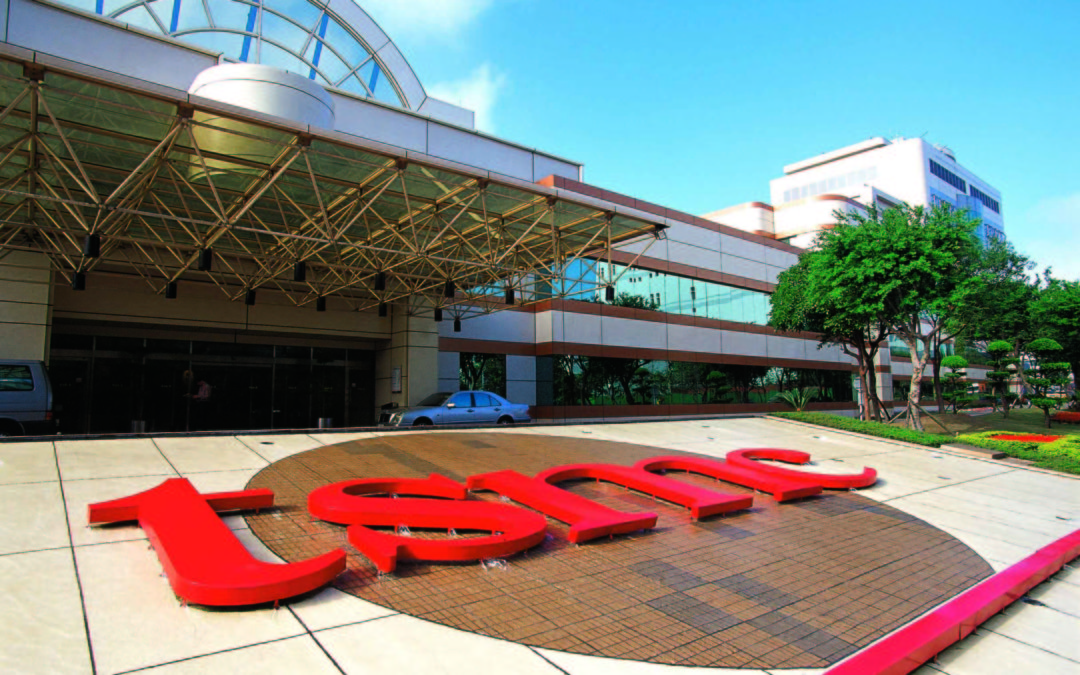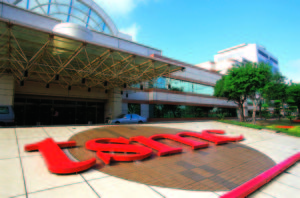Photo: Taiwan Semiconductor Manufacturing Company
BY STAS MARGARONIS
Dan Hutcheson, president of VLSI Research, a long-time analyst of the global semiconductor industry, says recent automotive semiconductor shortages will ease, but the United States must rebuild its semiconductor manufacturing capability partly focusing on a science and math education campaign aimed at younger Americans so as to enlist them as the next generation of semiconductor engineers, designers and workers.
Semiconductors are essential to the production of integrated circuits or chips and are used in a variety of electronics applications. A single chip can include thousands or even millions of semiconductors. As the world is moving toward major investments in renewable energy and artificial intelligence, global market demand for semiconductors is on the rise. Advanced cars use a multitude of sensors and controllers which rely on chips to collate and direct information.
On July 18th, Car and Driver magazine reported semiconductor shortages are still impacting car sales: “The semiconductor chip shortage that’s affecting new vehicle supply and causing used car prices to climb is officially, concretely affecting new car sales. It’s not a surprise and dealers and shoppers all knew this was coming, but now we have the data to prove it. “[1]
General Motors, on the other hand, said in June that shipments of cars and pick-up trucks were improving in a sign the semiconductor shortage was beginning to ease, according to a New York Times report.[2]
In a July 16th blog post, Hutcheson noted the $110 billion damage to the global auto industry:
“$110B: Chip shortage revenue cost to auto makers, says AlixPartners: This provides a great example of the downstream impact of mismanaging the chip supply chain. At the bottom of 2020’s Auto IC (Integrated Circuit) market in May, chip purchases were … below September 2019’s peak. They did not return to that peak until November of 2020.”[3]
Hutcheson says the United States is losing it semiconductor manufacturing capability and needs to rebuild with an emphasis on educating younger Americans in mathematics and science and streamlining permit approvals for new construction.
Dan Hutcheson
DOES THE SEMICONDUCTOR INDUSTRY DRIVE WOMEN AWAY?
A female semiconductor engineer working in Silicon Valley agrees with Hutcheson that improved education is important to recruit more younger Americans, but says that discrimination against female engineers has deterred many qualified female engineers from staying in the semiconductor and other electronics industries.
A March, 2021, blog written by Shari Liss and entitled “Knocking Down Walls: Women in the Chip Industry” was published on the website of Semi, the global association for electronics design and manufacturing.
The article warns about continued roadblocks for female advancement in the semiconductor industry:
“At the SEMI Foundation, we’re taking steps to support a big, audacious goal – achieving gender parity in the microelectronics industry. Dating to its roots at Bell Labs, Fairchild Semiconductor, and Intel in the late 1950s and 1960s, the semiconductor industry was pioneered by men at a time when far fewer women were in the workforce. While women have made major workforce gains since those early days, we’re still far from achieving anything close to an equitable representation of women…
According to the U.S. Bureau of Labor, only 11.8% of electrical and electronics engineers – and just 8.7% of mechanical engineers – are women. What’s more, research from the American Association of University Women (AAUW), a non-profit that champions equity for women and girls through advocacy, education, and research, tells us that women drop out of engineering careers more steadily and quickly than men. According to AAUW research, just 30% of women working in engineering are still in the field after 20 years compared to 35% of men. By the time women have been in the field for 30-34 years, that number falls to 19% – while it increases to 39% of men among the same cohort. The small number of women in engineering careers and the fewer still who stay in engineering long term illustrate the troubling gender disparities in the industry. “
To read the entire article please go to: https://www.semi.org/en/blogs/technology-trends/Women-Chip-Industry
A 2018 Pew Research report reflects the female concern about bias in science, technology engineering and math (STEM) industries such as the semiconductor industry:
“Women in STEM jobs are much more likely than men in such jobs to say they have experienced discrimination at work because of their gender and to consider discrimination a major reason that more women are not working in STEM. While the majority of STEM workers say their gender has made no particular difference in their success, women in STEM jobs are more inclined than men to say their gender has made it harder for them to succeed at work. Those that feel this way raise a number of concerns including pay gaps and unequal treatment from their coworkers stemming from gender stereotypes.”
For more information, please see: https://www.pewresearch.org/social-trends/2018/01/09/women-in-stem-see-more-gender-disparities-at-work-especially-those-in-computer-jobs-majority-male-workplaces/
The female engineer also referenced a study that was reported on in the Harvard Business Review in 2008 which found that over 50% of women employed in science and engineering positions drop out primarily because of gender discrimination:
” Stop for a moment and let these statistics sink in. Can you imagine the dustup in the boardroom if 50% of a company’s most promising products were abandoned midstream? And yet companies routinely invest large sums of money in developing female talent, only to see half of that talent walk out. The scale of the loss is enormous. And of course the pain of lost potential is particularly acute for the individuals themselves.
So why do women leave science, engineering, and technology careers? The answer comes in five parts. First and foremost, the hostility of the workplace culture drives them out. If machismo is on the run in most U.S. corporate settings, then this is its Alamo—a last holdout of redoubled intensity. Second is the dispiriting sense of isolation that comes when a woman is the only female on her team or at her rank—a problem exacerbated for others when she in turn leaves. Third, there is a strong disconnect between women’s preferred work rhythms and the risky “diving catch” and “firefighting” behavior that is recognized and rewarded in these male-dominated fields.”
Please see: https://hbr.org/2008/06/stopping-the-exodus-of-women-in-science
The female engineer says discriminatory practices described in 2008 remain in place in the U.S. semiconductor industry in 2021.
A spokesperson for the Semiconductor Industry Association (SIA) asked to comment about complaints of discriminatory practices against women in the semiconductor industry responded as follows:
“To compete and win in the technologies of the future, America needs to increase its supply of top STEM talent and ensure its high-tech workforce is more diverse and inclusive. The semiconductor industry recognizes the urgent need to ensure women and under-represented minorities comprise a larger share of the semiconductor workforce. Leaders in the industry are taking steps to overcome this challenge through a wide range of ambitious initiatives to recruit, retain, and promote a more diverse and inclusive workforce. A workforce that reflects the full diversity of our country will strengthen our industry and advance American innovation.”
The SIA spokesperson also referenced a May 2021 report produced by the SIA and Oxford Economics entitled “Chipping In: The Positive Impact of the Semiconductor Industry … ” which stated in a section entitled ‘Diversity and Inclusion’ that:
“The U.S. semiconductor industry is constantly working to diversify its workforce, leveraging support for both underrepresented professionals and students, including women and people of color, pursuing STEM degrees. One large U.S. semiconductor firm has supported external students through annual contributions of over $500,000 to underrepresented minorities pursuing electrical engineering through scholarship awards and program sponsorships. Another U.S. semiconductor company runs a workforce diversity recruitment program, including support to national affinity engineering associations and minority serving institutions (MSIs) of higher
education, as well as internal financing for employee affinity groups. In addition, another semiconductor firm created an endowment fund that provides financial support for students from underrepresented minority
populations in their graduate STEM pursuits.”
TAIWAN SEMICONDUCTOR MANUFACTURING COMPANY
Hutcheson said recent semiconductor shortages in the auto industry had the effect of warning politicians about the dangers of losing semiconductor production and the dangers of relying on foreign suppliers.
The evidence is in the dominance of Taiwan Semiconductor Manufacturing Company (TSMC), which has overtaken U.S.-based Intel as the global semiconductor leader. It is estimated that TSMC alone accounts for 20% of the world’s semiconductor production and up to 90% of the supply of the most advanced chips.[4]
There is a national security concern that if China invaded Taiwan, the supply of semiconductor components for electronics applications for manufacturers all over the world, including for autos, would be impacted.
TSMC insists that China will not risk a global manufacturing meltdown, because of Taiwan’s so-called “silicon shield.” TSMC chairman Mark Liu told CBS News’ “60 Minutes” this shield means “the world all needs Taiwan’s high-tech industry support. So, they will not let the war happen in this region because it goes against interest of every country in the world.”[5]
Hutcheson said that TSMC’s dominance in the semiconductor market was in part due to the mistake made by the United States and U.S. semiconductor companies in failing to retain and encourage Taiwanese engineers and technicians working in the United States, often educated in the United States, to stay in the United States. Instead, many moved back to Taiwan and helped build up Taiwan’s semiconductor capability contributing to a brain drain.
Hutcheson cited the example of Morris Chang. According to a Nikkei Asia report, Chang worked with Jack Kilby, the inventor of integrated circuits at Texas Instruments, where he served as a senior executive for 25 years. In 1985, Chang was invited by Taiwan’s government to help develop the island’s nascent semiconductor industry. Two years later Chang founded TSMC.[6]
IS THE U.S. LOSING THE SEMICONDUCTOR INVESTENTMENT RACE?
Hutcheson welcomes the recent bi-partisan decision by the U.S. Senate to invest $52 billion in new U.S. semiconductor production.
This investment should help U.S. makers such as Intel. However, Intel has been plagued by production problems in recent years and lost its global lead in 2017 when Samsung overtook it by revenues, and TSMC caught up on manufacturing process technology, according to a 2020 SemiWiki report.[7]
The big question is whether $52 billion U.S. investment in the industry is enough.
China plans to invest $1.4 trillion over six years to secure a lead in semiconductors, artificial intelligence and autonomous driving. South Korean companies like Samsung and SK Hynix Inc. are committing $450 billion over a decade on semiconductor research and expansion.
TSMC alone has earmarked $100 billion over the next three years. Finally, a new semiconductor manufacturing facility can cost $10 billion, Bloomberg reports.[8]
TSMC may also be helping China to improve its manufacturing capacity. According to a recent Voice of America report: “For years, China’s attempts to manufacture chips have failed since China lacks access to the intellectual property required for the process … Hence, TSMC’s expansion plan in its Nanjing (China) plant is welcomed by many in China despite worries that the survival of homegrown chipmakers may be threatened by the Taiwanese chipmaker…”[9]
TSMC also plans to set up a manufacturing facility in Arizona.
According to the Semiconductor Industry Association the share of global semiconductor manufacturing capacity in the U.S. decreased from 37% in 1990 to 12% in 2020. An SIA report found that a $50 billion federal investment in U.S. semiconductor manufacturing would build 19 major semiconductor manufacturing facilities, or ‘fabs’ over the next decade. This is 10 more than would be built without such government investments. Such a federal investment would create an average of 185,000 temporary American jobs annually and add $24.6 billion annually to the U.S. economy.[10]
INVESTING IN YOUNGER AMERICANS’ EDUCATION
Hutcheson believes a major focus for the United States needs to be made ensuring that younger Americans graduate with a much stronger base in the sciences and math.
He also emphasized less costly investments such as encouraging states to accept a standardized process for permitting the construction of new semiconductor facilities in the United States:
“In order to bring manufacturing back to America … make the ground more fertile. This means better access to correctly-educated labor and lower barriers to business investment.”
Hutcheson laid out the following priorities for rebuilding the U.S. semiconductor industry based on conversations that he has had with industry executives:
- Create a single federal construction permitting process for building semiconductor manufacturing facilities that overrides all state and local ordinances and streamline these with fast-track approval processes.
- Bolster Public-Private Partnerships with tight links to universities.
- Acknowledge the best way to deal with China is not to hold them back, but to beat them in open markets: “I’ve said this many times before and it’s happened: Attempts to lock American-made equipment out of China has only shifted market share away, weakening the very American companies they need to protect. Just look at what we did to American leadership in lithography tools in the 70s. The mere threat of retaliation caused Japan to fund an overwhelming force to take over lithography in the 80s.”
- Align with the EU, Japan, Taiwan, and South Korea for a global manufacturing trade agreement.
- Require a stronger emphasis of science, technology, engineering and mathematics (STEM) in K-12 schooling in the United States and require Computer Science: “Want to be the world’s leader 10… 20… 40… 100 years from now… An educated workforce is the only way.”
- Provide financial incentives for college students to get a degree in STEM.
- Divert income taxes for those working in STEM with college loans, apply personal income taxes to pay off this debt.
- Provide tax incentives for those who work in STEM-related industries (not finance): “Yes, this will take an act of Congress, but the real effect would be to increase labor supply and lower the cost of labor.”
- Provide that any foreign student getting an advanced degree in STEM in the United States “automatically gets a green card upon graduation and is fast tracked to citizenship, provided they stay and go to work in America’s semiconductor industry.”
The female semiconductor engineer, referred to earlier, agrees with many of the points that Hutcheson makes but notes: ” Large labor cost in the U.S. continues to push companies to create technology jobs in Asia and even in Europe.”
She points out that Chinese workers are frequently overworked: “In the case of Asia, especially China, the labor protection is limited. People are regularly overworked, etc. This helps to lower labor cost. So, what might also help is to have a set of specific labor practices that U.S. companies would be required to demand when they do business in Asia.”
FOOTNOTES
[1] https://www.caranddriver.com/news/a37058080/new-car-sales-june-chip-shortage/
[2] https://www.nytimes.com/2021/06/03/business/general-motors-chip-shortage.html
[3] https://www.vlsiresearch.com/the-chip-insider/110b-dollar-chip-shortage-cost and
https://www.cnbc.com/2021/05/14/chip-shortage-expected-to-cost-auto-industry-110-billion-in-2021.html
[4] https://www.voanews.com/east-asia-pacific/can-taiwans-silicon-shield-protect-it-against-chinas-aggression
[5] Ibid
[6] https://asia.nikkei.com/Business/Tech/Semiconductors/TSMC-s-Morris-Chang-calls-on-Taiwan-to-defend-its-chip-industry
[7] https://semiwiki.com/semiconductor-manufacturers/intel/289196-murphys-law-vs-moores-law-how-intel-lost-its-dominance-in-the-computer-industry/
[8] https://www.bloomberg.com/news/articles/2021-06-09/biden-will-need-more-than-52-billion-to-counter-china-in-chips
[9] https://www.voanews.com/east-asia-pacific/can-taiwans-silicon-shield-protect-it-against-chinas-aggression
[10] https://www.semiconductors.org/sia-welcomes-white-house-report-on-strengthening-americas-semiconductor-supply-chains/



